Diwali Daze and Its Changing Ways
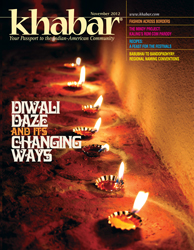
The celebration of this festival of lights has seen big changes in just a generation, but what hasn’t changed is the love and warmth it still exudes. Here are past traditions and today’s trends.
Bursting crackers till our ears revolted. Gorging on ghee-dripping gulab jamuns and laddoos. Reciting aartis in front of Lakshmi and Ganesha till we felt assured we’d expressed our gratitude. Getting dressed in rich, traditional clothes till we’d got as many colors as the rainbow on us. Drawing up intricate rangoli patterns till the guests felt truly welcomed. Filling up homes with the aroma of incense sticks and fresh flowers. Preparing lavish dinners till the pots and pans groaned with spices, vegetables, and condiments. Lighting up the home with candles and diyas till every single corner reflected light and love and the atmosphere was redolent with celebration. These were the markers of Diwali.
But all this was a long time ago…
When we didn’t know that crackers were made by children in dark sweatshops. Or that ghee choked up our arteries. Until the Chinese exploded the neighborhood markets with fancy LED lights. When we weren’t aware that pollution levels in the air were going up with each passing day. Or we hadn’t had a bite of scrumptious Korean, Thai or Mediterranean cuisines. When we didn’t care for outfits carrying an international designer tag, or didn’t think it was important for the business to spend time with partners and clients. When aartis didn’t come loaded on CDs, DVDs, and YouTube.
But when did the planet get so ill and gray? When did wine become our national festive drink? When did macaroons and donuts replace pakoras and samosas? When did the prayers played on an iPod become louder than the ones we recited ourselves?
When, oh, when did Diwali change from what we knew it to be? Perhaps when we ourselves changed so much? When we had opened up, adapted, accepted, welcomed, become more sensitive and aware to such an extent that we had also begun to lose out on some fine things? We revisit the charm of the good old Diwali as we blend it with the Diwali of today. Here’s a tale of realization, revelry, and rediscovery.
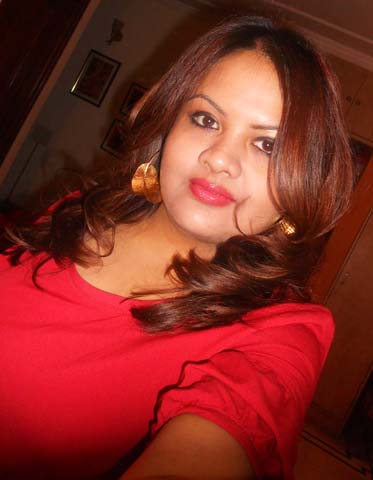
“I grew up in Kolkata and I remember how every year my grandfather would make chocolate bombs, which were later sun-dried on the terrace. It was he who taught me about the simplicity and purity of Diwali,” says Sreemoyee Piu Kundu, a former editor with publications like the Times of India and India Today, and now a full-time author based in New Delhi. Growing up with grandparents is fun and fulfilling. If you’ve been fortunate enough to have the privilege of sharing homes and lives with grandparents then you would agree that real education doesn’t start in kindergarten but at home with grandparents. It is they who introduce us to the meaning, love, and traditions of a festival.
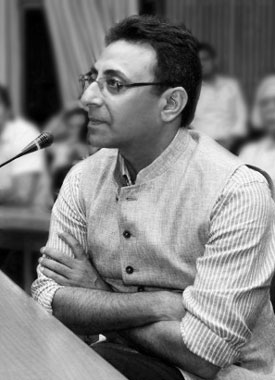
However, today, not many enjoy the luxury of staying in a joint family, which translates into a major loss when it comes to learning values and traditions that bind families. “We seem to be drifting away from the core purpose behind our festivals and because we live in nuclear families the elders are generally not around to share traditions and perform ceremonies. As a result for the young Diwali becomes yet another holiday and time to party,” laments Sumant Batra, a lawyer and author of the popular limited-edition coffee table book, The Indians: Interesting Aspects, Extraordinary Facets.
With diversity comes more
awareness
But then, perhaps not all is lost. Because each city and state in India is home to many diverse communities, we have grown more aware of our festivals and traditions. I recall how during my growing up years in northern India, I knew little about the pot-bellied Lord Ganesha except his love of laddoos. Little did I know then that my cousins in Mumbai (Bombay then) were celebrating Ganesh Chathurthi with my friend Ganesha, too. Today, my four-year-old niece tells me that the festive season in her school has begun and they will be celebrating Ganesh Chathurthi, Navaratri, Durga Puja, Dusshera, Halloween Night, Diwali, Id, and Bhaiya Dooj back to back. She also knows that a modak is what a few of her friends call a laddoo.
Inter-caste marriages are another factor behind the awareness. It is common for many urban Indian children to have relatives and cousins who live in or belong partly to other cultures. Schools are playing a big role in increasing awareness, too. “Today, schools lay emphasis on the celebration of every festival, which is a big education itself,” says Vandana Pabi, a primary school teacher from Gurgaon. Anne Cherian, chief copy editor, NIE (Newspaper In Education), The Times of India, shares how each festival is a celebration in the editions they make for school children. And she lives by what they publish, too: “While I get invited to Diwali puja and dinners at my friends’ homes they join us for cake-mixing sessions and carol singing during Christmas.”
For the last six years Dr. Manita Grover celebrated Diwali during the day. “As a student of medicine in Chennai I fell in love with the traditions of the South. It was only during my stay there that I learnt and later began to enjoy celebrating Diwali in the early morning.”
But as people indulge in buying diyas for Diwali along with costume masks for Halloween parties one can’t help but both rejoice and worry. “Our festivals are a powerful medium for passing on and reinforcing values and teachings that are an important part of our social fabric. While it is a good idea to learn about the festivals of other communities and even countries, there are also hazards of globalization as we get more fascinated and intrigued by international festivals,” says Batra. The idea here is to understand the difference between indulgence and overindulgence.
Will Diwali’s sacred allure survive?
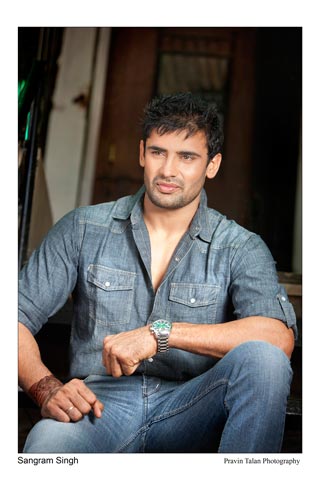
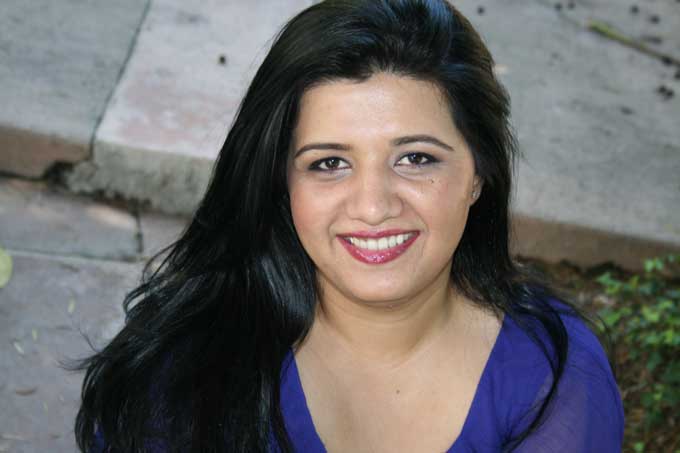 “While earlier Diwali gatherings were more about meeting families and distributing sweets, I feel now it is more about playing cards and drinking on this auspicious day, which is disrespectful,” says Sangram Singh, a wrestler. Agrees author Varsha Dixit, “What I remember most about my Diwali as a child is not the goodies but the late night walk that we took with my father. We would walk around the neighborhood and watch the lights that lit up the many homes. Diwali was always about spending more time with loved ones and building memories than spending on gifts.”
“While earlier Diwali gatherings were more about meeting families and distributing sweets, I feel now it is more about playing cards and drinking on this auspicious day, which is disrespectful,” says Sangram Singh, a wrestler. Agrees author Varsha Dixit, “What I remember most about my Diwali as a child is not the goodies but the late night walk that we took with my father. We would walk around the neighborhood and watch the lights that lit up the many homes. Diwali was always about spending more time with loved ones and building memories than spending on gifts.”
“While it is true that conventions or traditions should not necessarily stand in the way of innovation and progress, it is also important that we do not rob the festivals of their original charm and the nostalgia attached to them,” says Batra. So if our lives today have become busier and we no longer have time to visit relatives as we did in the past, greeting each other on mobiles or social networking sites may not be a bad idea after all—provided one realizes that while video chats can bring us closer it can also distance us from significant ceremonies, rituals, and even emotions. “Diwali is a festival that I have always associated with the family coming together to celebrate. As a child I remember going to my Nanaji’s house in Baroda every Diwali. Time constraints don’t allow people to travel like that anymore. However, I make sure that I am in Mumbai with my parents and brother each Diwali. I help Mom in making sweets at home and watch her in awe as she adds her special touch to them. I even do the rangoli outside the house,” says actress Payal Rohatgi.
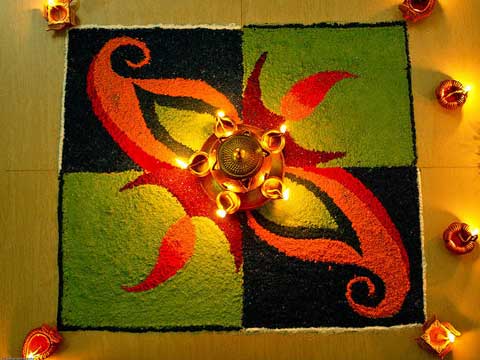
Stickers or stick-ons cannot compete with the original rangolis—both in beauty and the pride of expressing one’s own creativity.
Dixit, who is a mother and wife today, says, “I relive my childhood memories when I light up diyas and make rangoli with my daughter and husband. Diwali for me is about shopping, decorating, and cooking but most definitely it is about spending some quality time with my family and close friends.”
The vanishing Goddesses
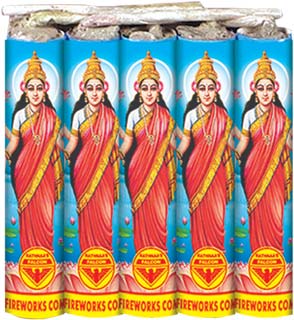 Another big change that has come
in festivities is, of course, to do with the
fireworks. I recall how for years I looked
forward to the time when makeshift
cracker shops would take over every
empty corner in my neighborhood. I
would simply stand there and absorb
the psychedelic colors of the small, big,
short, tall, square and rectangular fireworks
boxes. Most of them carried images
of Durga’s powerful persona or Lakshmi’s
calm presence, some, those of little
girls and boys, and a few others that of
the Taj Mahal. My mother would buy me
a pack of phuljhari and point to the image
on the box and say, “That’s Goddess
Lakshmi we are taking home with us.” I
could identify with most of the images
on the boxes: they were the same gods
and goddesses who adorned the wall
calendars at my grandparents’ home.
However, a recent visit to a fireworks
shop gave me a gaudy shock. Half-clad
Katrina Kaifs, Vidya Balans, and Kareena
Kapoors smiled at me from most boxes.
Another big change that has come
in festivities is, of course, to do with the
fireworks. I recall how for years I looked
forward to the time when makeshift
cracker shops would take over every
empty corner in my neighborhood. I
would simply stand there and absorb
the psychedelic colors of the small, big,
short, tall, square and rectangular fireworks
boxes. Most of them carried images
of Durga’s powerful persona or Lakshmi’s
calm presence, some, those of little
girls and boys, and a few others that of
the Taj Mahal. My mother would buy me
a pack of phuljhari and point to the image
on the box and say, “That’s Goddess
Lakshmi we are taking home with us.” I
could identify with most of the images
on the boxes: they were the same gods
and goddesses who adorned the wall
calendars at my grandparents’ home.
However, a recent visit to a fireworks
shop gave me a gaudy shock. Half-clad
Katrina Kaifs, Vidya Balans, and Kareena
Kapoors smiled at me from most boxes.
Visual artist Nishant Mudgal says he clearly remembers the images that were printed on the boxes a few Diwalis ago, “I wish I had preserved some of the vintage boxes. (But) the trend of having film stars on the boxes was always there. A vendor points out: “People don’t want to see Hema Malini or Sridevi on the boxes now.”
Parbina Rashid, a senior journalist with The Tribune, observes that the firecracker packages are cultural statements in themselves. “Sivakasi, the small town in Tamil Nadu where malnourished children and women work in fireworks factories, makes its presence felt every year. And looking at the packaging of the Sivakasi-made crackers one can assume that this town is not just doing a great job in its economic front but in the cultural milieu too.” Yes, the actresses that adorn the boxes indeed reflect today’s cultural icons. It is only fair to miss the simplicity that once existed.
“It is predictable, yet nostalgic. The reckless and thoughtless glamorization, modernization, and commercialization of the festivities that surround the festivals are rapidly compromising the traditions and rituals that form their foundation,” sums up Batra.
Responsible revelry
Interestingly, firecracker sales
have seen a downward trend despite
gimmicks like putting the pictures of
today’s hot stars on boxes. Many today
shy away from buying fireworks
because of an increased awareness
of how they contribute to pollution
and also of the poor conditions in fireworks
factories where children work in
pathetic conditions.
Actress Mahek Chahal, who grew up in Norway, recalls, “Diwali in Norway was quite simple as we were not allowed to burn any crackers or make too much noise. And fortunately in the last ten years a major change I have noticed in India is that people have become more conscious about the environment.” What is commendable here is the fact that the young are leading the “Say no to crackers” campaign. “My mother told me that crackers are made by boys of my age,” says Aryan, six, adding, “and also that burning too many crackers will kill the sapling I sowed last month.”
It is indeed heartwarming to see children make paintings with ‘Say no to crackers’ slogan or go door-to-door and get their neighbors to sign the pledge, too.
“I am happy to see that people don’t burn a lot of crackers and have begun to understand its harmful effect on the environment and also become active towards protecting the rights of the children,” shares Singh.
At the same time, the increased awareness has had another positive fallout: people have also begun to adhere to the deadline of not bursting crackers after 10 p.m. Since a lot of youngsters now prefer lavish parties in the comforts of their home they don’t feel the need to be bursting crackers late into the night. As for late-night parties that can lead to drunken driving and accidents, numerous steps are being taken to spread awareness, keep a check, and provide alternatives.
Sumptuous food – a staple that
continues to endure but in
newer forms
Now no party is complete without
food, especially Diwali parties. The sight
of a dollop of ghee—my grandmother’s
special ingredient in the homemade
mithai—melts my heart. She would begin
the preparations days in advance and fill
up her kitchen with rich and sweet aromas.
Even today, at many homes, guests
are tempted with a platter adorned with
ghar ki mithai or rich traditional treats
bought from shops.
Helping Mom in the kitchen is a memory dear to many young girls. “When we were young, my sister and I would help Mom in the cooking before the puja. Today, since I live alone I start the cooking a few days in advance. I make sweets like gujiyas and nariyal barfi and distribute it amongst friends, family, and neighbors,” says actress Shweta Bhardwaj.
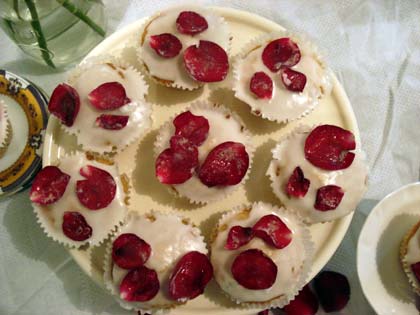 But not everybody is still a huge fan of traditional treats, as a lot of people now prefer to bite into desserts with a twist like Rasmalai Cheesecake, Gulab Jamun Creme Brulee, and Kesar cupcakes. Executive Chef Pallav Singh, JW Marriott, Chandigarh, says, “Today people travel a lot more and hence are exposed to international flavors and tastes. Also, economic liberalization coupled with the arrival of expats in our country is responsible for the change in tastes.”
But not everybody is still a huge fan of traditional treats, as a lot of people now prefer to bite into desserts with a twist like Rasmalai Cheesecake, Gulab Jamun Creme Brulee, and Kesar cupcakes. Executive Chef Pallav Singh, JW Marriott, Chandigarh, says, “Today people travel a lot more and hence are exposed to international flavors and tastes. Also, economic liberalization coupled with the arrival of expats in our country is responsible for the change in tastes.”
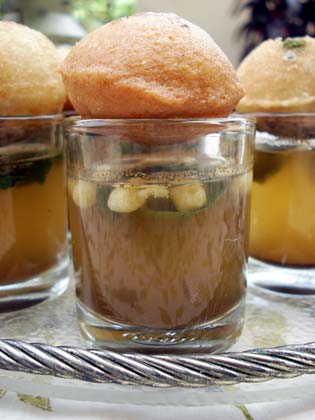
New, hybrid creations such as the Gulab Jaal (rosewater) cup-cake (above) are overshadowing the classics such as gulab jamun (below). And on the right, gol gappa vodka shots anyone? (Photos: Prachi Grover)
“Indian sweets with a Western touch have less sugar in them and are therefore preferred by the health-conscious circuit,” adds Singh. Some favorite treats this year are the Baked Rasgulle, Fig Kulfi with Balsamic Glaze, and Fruit Salad with Rose Petals. Needless to say, these modern mithais are complemented with modern drinks as well. Nimbu paani or buttermilk or even a cup of chai no longer befits the Diwali meal.
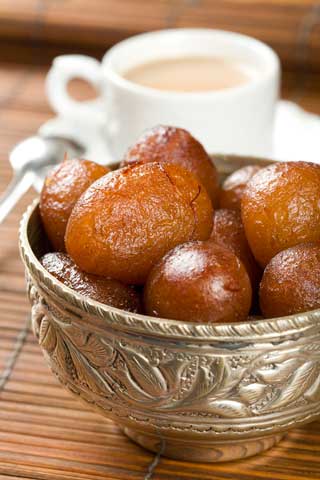
Clearly, Diwali is seeing new trends in everything that we associated with the festival—right from fireworks to mithais, from outfits to traditions, and adornments to environmental awareness. But can a Skype call with grandparents replace real hugs? Yes and no. At the end of the day we have the choice to look both back and ahead. “Festivals in India are symbolic of our cultural heritage and our religious pageantry and I don’t think the core can ever be corrupted by modern progressions,” Kundu observes. After all, you can’t take the sweetness out of a gulab jamun however you westernize it. Neither can you doubt the brightness of the sparklers when they come packaged in a modern box. And then when festivals are all about the young and old coming together to celebrate why should we not just do that? So this Diwali make sure that you hold on to some things from the past and shake hands with some things of today and tomorrow.
[Based in New Delhi, Purva Grover is a journalist and editor who writes about art, fashion, cinema, food, television, and people.]
Celeb talk
Some celebrities share their favorite Diwali memories and traditions:
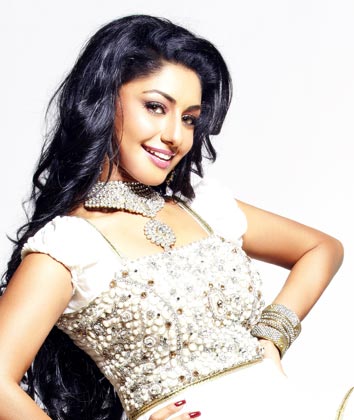
“I have been in Mumbai for only the last 10 years. The Diwali traditions in Norway were very different. We never really had any special pujas but we always said our little prayers at home. We would decorate the house with lights and diyas. We always bought new clothes on Diwali as is the tradition everywhere. We used to either attend dinners at relatives’ or friends’ places or host them. As kids we would just play and run around, while the elders chatted away, which is the case even today. Ever since I have moved to Mumbai I have been participating in Diwali traditions like the Lakshmi puja, card parties (though I don’t gamble), lavish dinners and more. Today, the parties are grander, pujas bigger, and clothes much more glamorous.”
—Mahek Chahal, model and actress
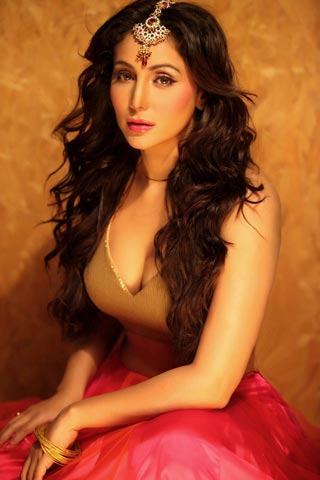
We used to have a lavish Lakshmi pujan at home when a lot of relatives and friends would come over. We had a huge guest list as my family has had both a political and business background. The dinner after the puja was grand where a lot of villagers came to our house and we would spend time with them, too. But now this tradition will be missed as I lost my dad two months back. Now since we have grown up, our Diwali celebrations are a lot more subtle. We decorate the house with diyas, rangoli, and flowers. Since we never played a lot with fireworks even as children, even now just as a
custom we light up few phooljharis and anar.
—Shilpi Sharma, model
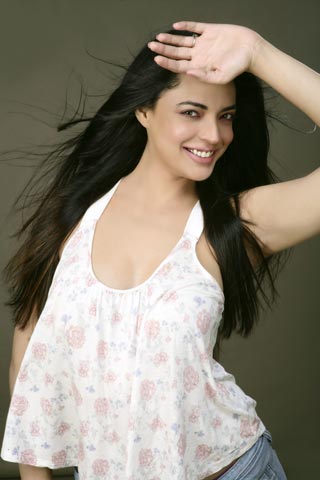
“Diwali is one festival that has always been very close to my heart. I capture the memories each year in photos or videos. I buy flowers and traditional clothes, make rangolis, and follow the traditional way of doing Lakshmi pujan as my mom did. Since my parents and sister live in Delhi while I am in Mumbai I not just miss them but also miss being a child.”
—Shweta Bhardwaj, model and actress
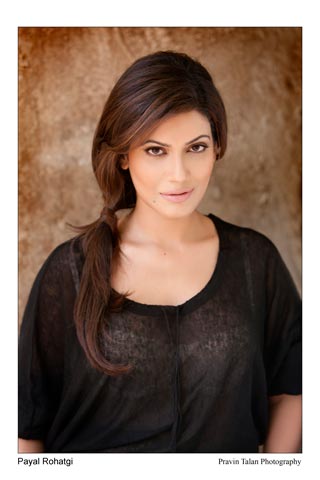
“As a child I used to enjoy bursting crackers with my cousins. But now I don’t do that or encourage
others to do so. I maintain the same fervor by making a rangoli, enjoying mithais, and spending time with
the family.”
—Payal Rohatgi, model and actress
Enjoyed reading Khabar magazine? Subscribe to Khabar and get a full digital copy of this Indian-American community magazine.
blog comments powered by Disqus












